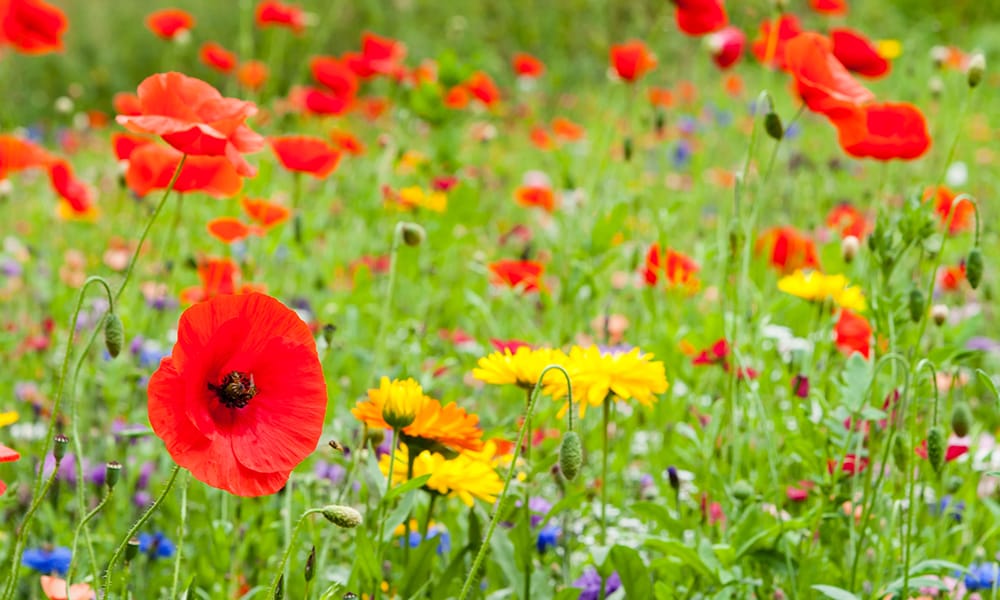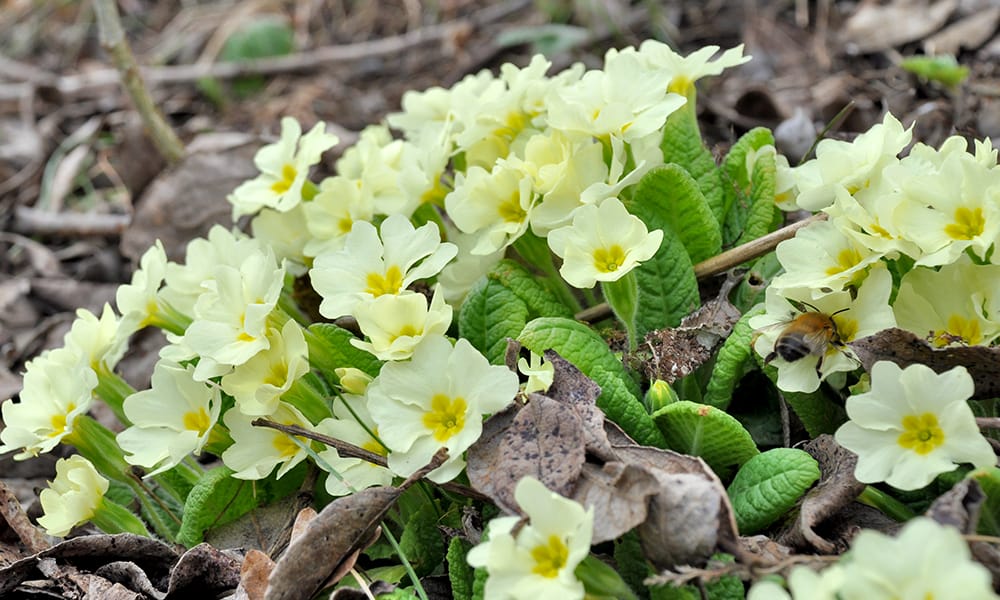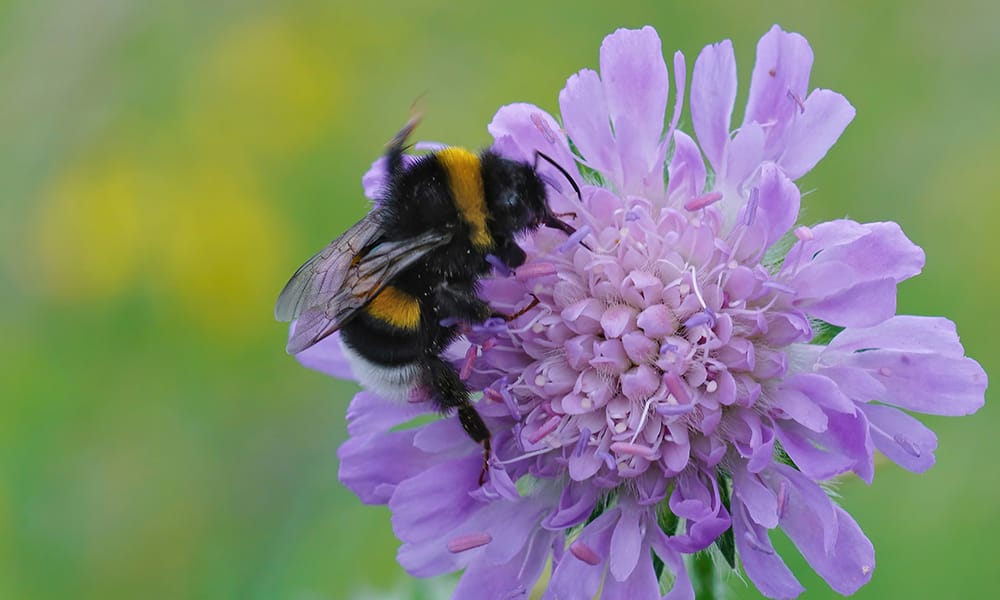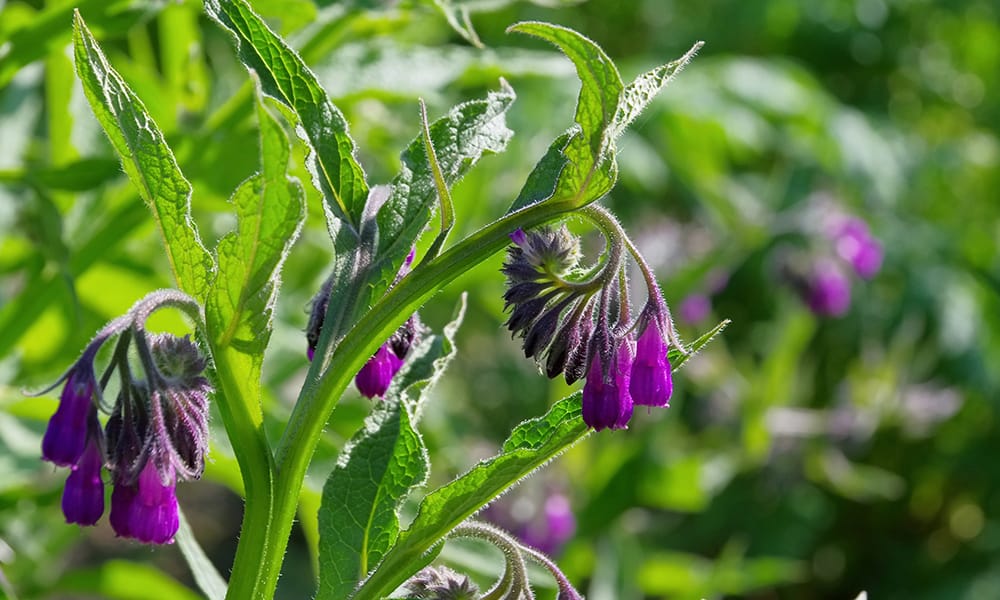When people go plant shopping, they mostly pick what is pretty, fits the space, or is easy to maintain and don’t really pay attention to where the flower originates from.
So, because of this, most of our gardens have quite many non-native flowers and plants in them. Does this matter? Actually yes it does if you want to attract more wildlife. But hold on, this is fine, don’t start digging all your exotic plants out!
According to the RHS, many of these non-native plants flower later in the year and can extend the season for nectar for pollinators – this means they can be beneficial.
But more studies are showing lately that a mix of native and non-native (with a majority of native / northern hemisphere plants) is considered the ideal if you want to attract wildlife into your garden.
Research has shown that pollinators and ground bugs etc, do tend to prefer native plants. RHS recently completed a 4 year study at Wisley Gardens, where they found native plants generally provide better habitats, and are preferred by pollinators.

We don’t all need to attain the ideal, a garden is a changing thing, and perfection doesn’t exist, well not in my garden!
One of the top recommendations from the study was “Regardless of plant origin (native or non-native), the more flowers your garden can offer throughout the year, the greater the number of bees, hoverflies and other pollinating insects it will attract and support.”
So don’t worry.
But it’s great to be aware of when choosing new plants and flowers for the garden. If you can add a few more native varieties when you’re next shopping or growing from seed, it will be really beneficial.
To help give a little guidance, I’ve selected a few native plants that are generally easy to find in shops and garden centres and easy to grow and maintain – the bugs will thank you. Most of these are perennials, so will grow back year after a year, and some can be divided too, to share with friends.
Wildflower seed mix
This is an easy and cheap one; if you have a patch you can leave to go a little wild (and beautiful), sowing a UK Native wildflower seed mix will do wonders and return year after year. We offer them our free in Spring and Autumn and have written about best practices and maintenance here.

Primrose (Primula vulgaris)

Field Scabious (Knautia arvensis)
A lovely round purple flower that looks fantastic in any garden and is very well suited to any garden, but particularly to the cottage garden look. With regular deadheading (I just do it quickly with my hands) in the Summer, they will keep blooming for ages and ages. They work well in pots or the ground, and pollinators love mine. Finches and linnets also eat the seeds.

Bell Heather ( Erica cinerea)
Bell Heathers (and many other heathers!) are small evergreen shrubs that are native to a variety of landscapes in the UK and thrive well in our gardens, too; they like acidic soil but are cope pretty well almost anywhere. They have distinctive purpley/pink flowers that bees, moths and butterflies just love in the late Summer. They also give great shelter on the ground for creatures like frogs to hide in.

Common Yarrow (Achillea millefolium)
Yarrow has long stems with an unusual flower, with a flat-top – they look great in a border and can give some fascinating shapes when mixed with other plants. Only the common one (white) is native to the UK) They love the sun and are drought resistant – they need very little care overall.

Comfrey (Symphytum officinale)
Comfry is a great plant with a number of uses. They are super hardy and good for the back of a border. Bumblebees love them! And the leaves can be used to make your own fertiliser (or you just add them to compost to help it along). They can spread, so make sure to keep it in check if you want, and you can propagate by division in Spring to share with a neighbour.

Common honeysuckle (Lonicera periclymenum)
Honeysuckles have trumpet-shaped flowers that smell amazing in bloom, particularly in the evenings. They support quite a number of butterflies and moths as well as bumblebees.
They’re pretty vigorous climbers, so they are great for covering a fence. If you prune a lot, they can get quite bushy, providing a bit of shelter for birds too. Birds also love their berries. Be aware not all are native to the UK; it’s just the common one (see Latin name on the label when you’re buying!) that is.

Thanks for reading, we’d love to see your pictures, do you have any of these plants?
If you would like more information on gardening for wildlife or want advice, get in touch on either our Facebook page, Instagram, or email.

[…] for hedgehogs is their natural diet of bugs, so again, leaving a wild part of your garden and planting to attract insects, keeping log piles etc will give them lots of […]